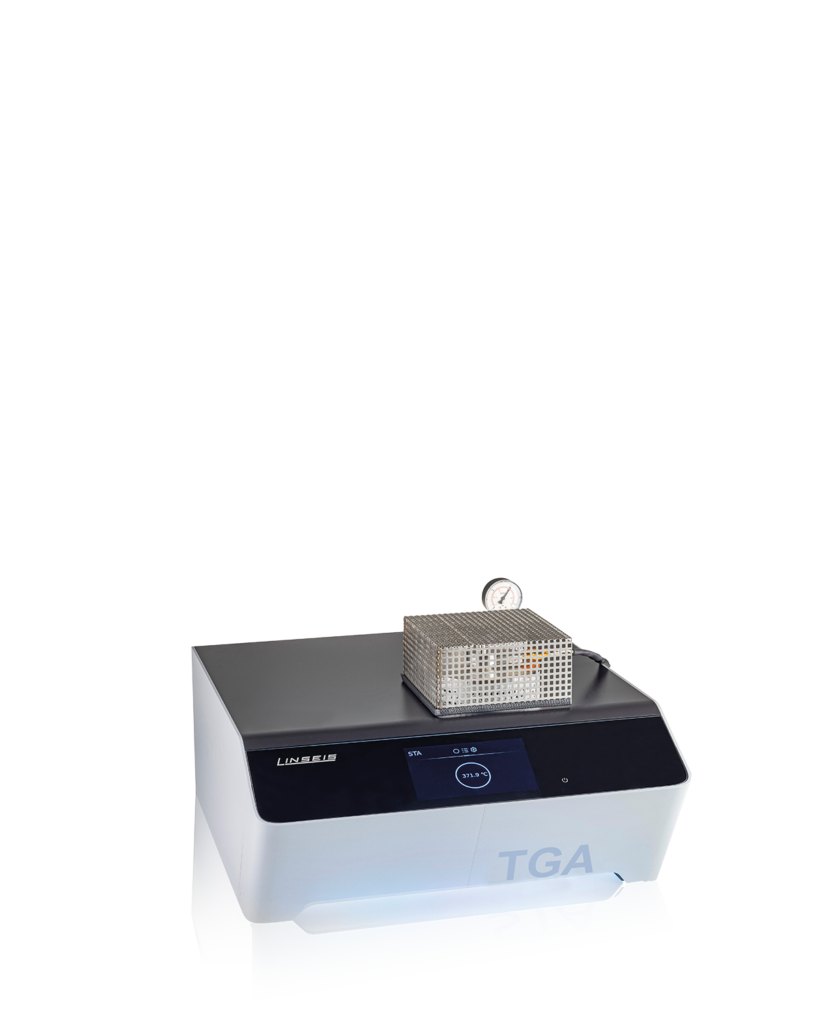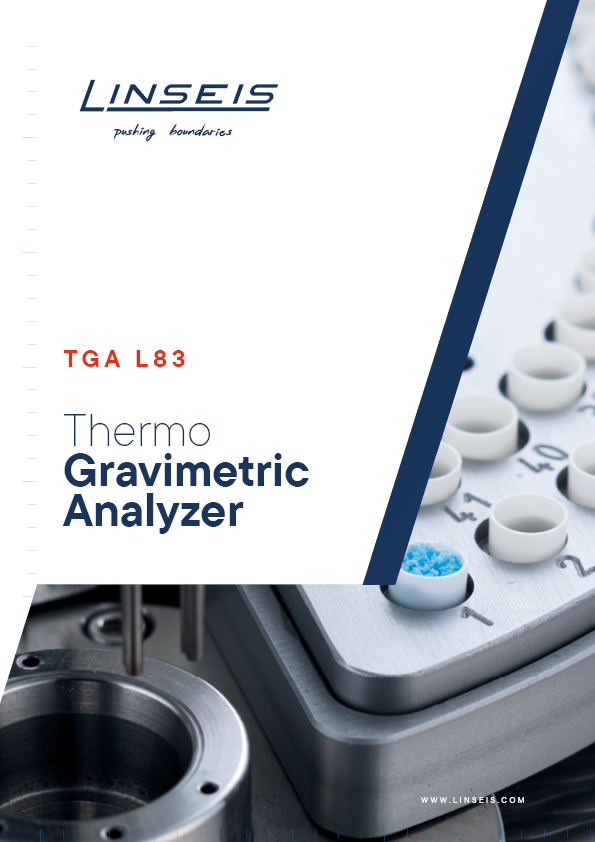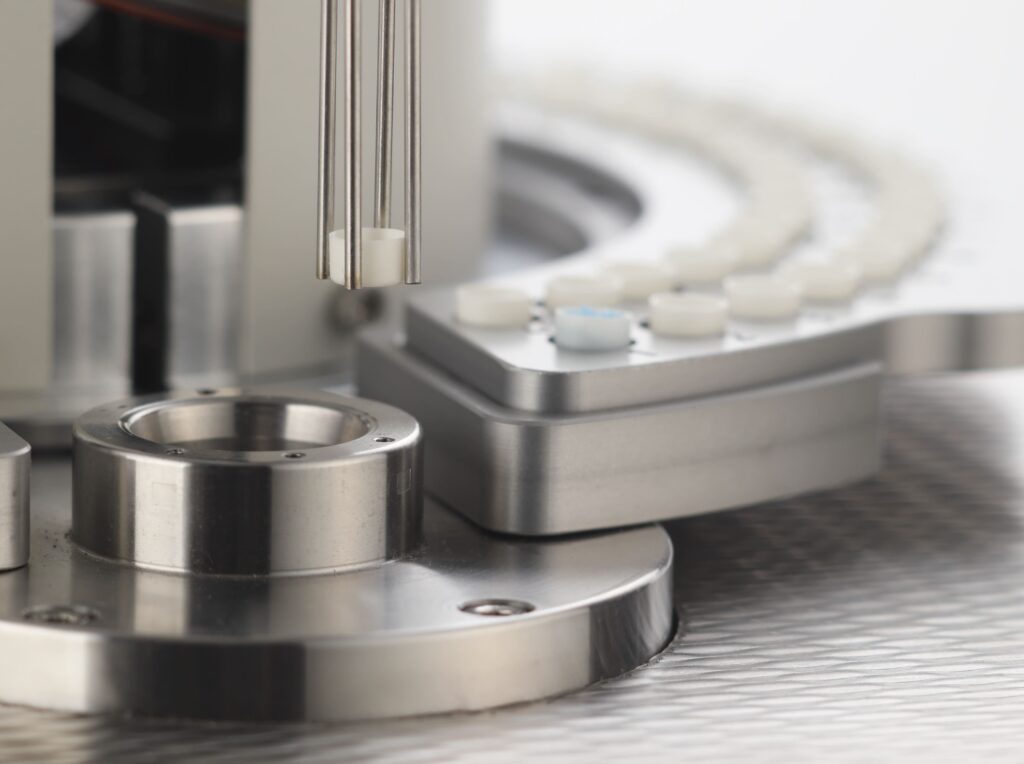Description
To the point
Thermogravimetry is a technique that monitores the sample mass against time or temperature in a specific atmosphere while the temperature is undergoing controlled changes. This technique mainly serves the determination of material compositions. It is a common used analysis method in the chemical and pharmaceutical industry. Thermogravimetric analysis (TGA) is typically performed on polymers, food, pharmaceuticals as well as many other materials.
The LINSEIS TGA L83 is a robust and reliable TGA outperforming most competition high end models. The sub microgram balance offers highest sensitivity and resolution. The instrument is perfectly suited for academic teaching and day to day laboratory quality control applications.
Unsurpassed performance
L – DSC – Combined weight change and differential scanning calorimeter
Unsurpassed sensitivity – sub microgram balance with thermostatic controlled measurement chamber
Benchmark resolution – for detection of fast weight changes
Reliable Automation – up to 90 positions autosampler
Ultra Fast Heater – 250 °C/min heating speed.
New features
So we can help you
as quickly as possible

Software improvements
- Lex Bus Plug & Play: Our latest hardware interface Lex Bus revolutionizes the way data is communicated within our systems.
Lex Bus enables the seamless and efficient integration of new hardware and software tools. - Improved oven control: Our new and further improved oven control offers more precise temperature control, which leads to better measurement results through a better temperature sequence according to your wishes and requirements.
- New software with user interface: Our communication is now even more focused on the needs of our customers, so that you are always informed about the current status and receive support whenever it is needed.
- Process security: We have optimized our software for process security so that your data is protected at all times and can be processed in a fail-safe manner.
- Error messages and bug fixes: Our system automatically detects errors and bugs, which are immediately documented and rectified to minimize downtime.
- Automatic updates and new functions: Our software receives regular automatic updates that not only improve security, but also continuously provide new functions.
- Permanent system monitoring: Our software constantly monitors the system parameters to ensure optimum performance.
- Preventive maintenance and problem detection: Our preventive maintenance approach detects problems and wear before they can cause damage and keeps your device in top shape.
Linseis Lab Link
With Linseis Lab Link, we offer an integrated solution for eliminating uncertainties in measurement results.
With direct access to our application experts via the software, you can receive advice on the correct measurement procedure and how to evaluate the results.
This direct communication ensures optimal results and maximizes the efficiency of your measurements for accurate analysis and research and a smooth process flow.
Electronic upgrade
The new measuring electronics offer significant performance improvements, inspired by the architecture of the “Linseis Digital Balance”.
The advantages of this new digital balance architecture include:
- Minimization of drift: Ensures consistently high precision over long periods of time.
- Improved resolution: Unique sub-microgram resolution.
- Highest accuracy: Improves the reliability of your measurement results.
- Reproducibility: Ensures consistent results with repeated measurements.
Design improvements
The new device design is characterized by an elegant aluminium housing that is both robust and aesthetically pleasing.
The LED status bar provides a user-friendly visualization of important information.
A touch panel enables intuitive operation and contributes to a modern user experience that combines convenience and functionality.
The new device design focuses on ergonomic operation.
New hardware features:
- Tri-Couple DTA measuring system: DTA measuring system with three thermocouples for the smallest endo-/exothermic effects in inhomogeneous samples
- Jacketed DTA measuring system for corrosive samples
- Patented “Forced Flow” method: Enables forced flow through your TG or TG-DTA.
Our system enables a forced flow through the sample, whereby up to 100 % of the reaction gas is supplied directly to the sample.
This novel method enables scalable measurements for the first time, allowing precise analysis under real conditions.
Unique features

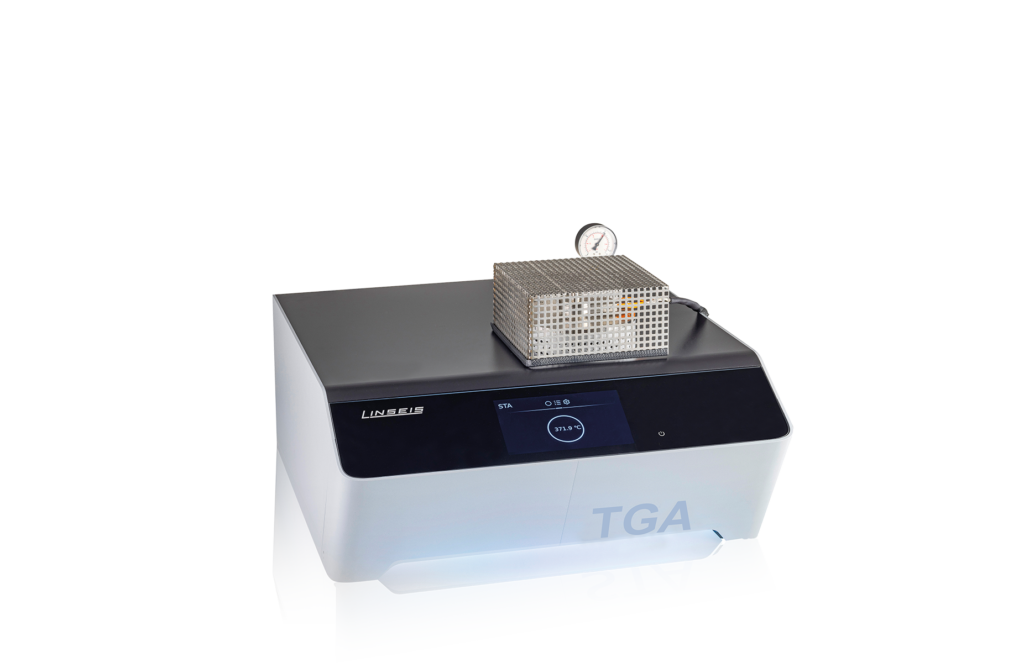
Sample robot
Wide temperature
and pressure range
Versatile application options
Vacuum tight design
Questions? We're just a call away!
+1 (609) 223 2070
+49 (0) 9287/880 0
Our service is available Monday to
Thursday from 8 am to 4 pm
and Friday from 8 am to 12 pm.
We are here for you!
Specifications
Hard Facts
MODEL | TGA L83 |
|---|---|
| Design: | Top-loading |
| Temperature range: | RT up to 1100°C |
| Heating and cooling rates: | 0.001 to 250°C/min |
| Sample weight: | Max. 5g |
| Resolution | 0.1 µg |
| Gas atmospheres: | Inert, oxidizing, reducing, vacuum |
| Vacuum: | Up to 10E-3 mbar |
| Gas Dosage: | Built-in MFC block with 3 gases (one purge gas and two reaction gases) |
| Cooling rate: | < 12min (1100°C - 100°C) |
| Sample holder: | TGA |
| Sample robot: | 90 positions |
| Crucible: | Pt, Al2O3, Au, Al, Ag etc. more on request |
| EGA Couplings: | Optional FTIR and/or MS or GC-MS |
| Interface: | USB |
| Technical data may vary depending on furnace and components | |
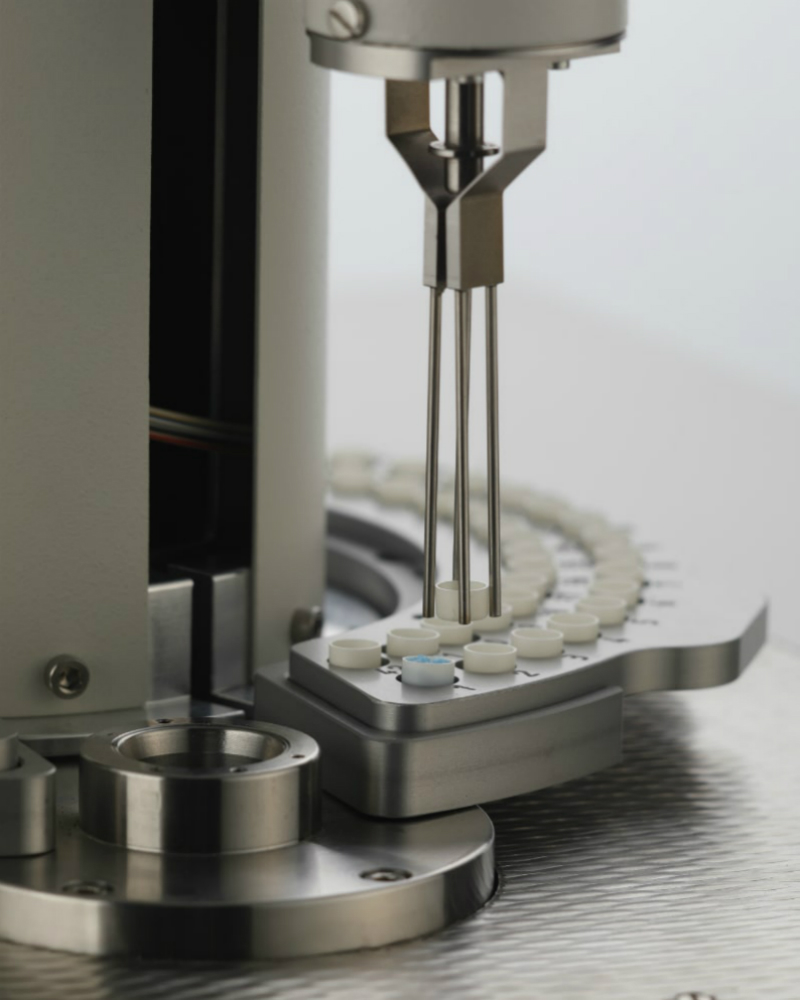
Available accessories
- Calculated DTA software
- Various gas boxes: manual, semi-automatic and MFC controlled
- Variety of crucibles (gold, silver, platinum, aluminum, Al2O3, graphite, tungsten, stainless steel (high pressure), etc.)
- Various rotary and turbomolecular pumps
- Sample robots with up to 90 positions
Crucibles and Sensors
The Linseis TGA L83 provides flexibility with a selection of user-exchangeable sensors, each compatible with various thermocouples to ensure optimal sensitivity for different temperature ranges and applications. Additionally, a variety of crucible types is available, allowing users to tailor the system to their specific analytical needs.
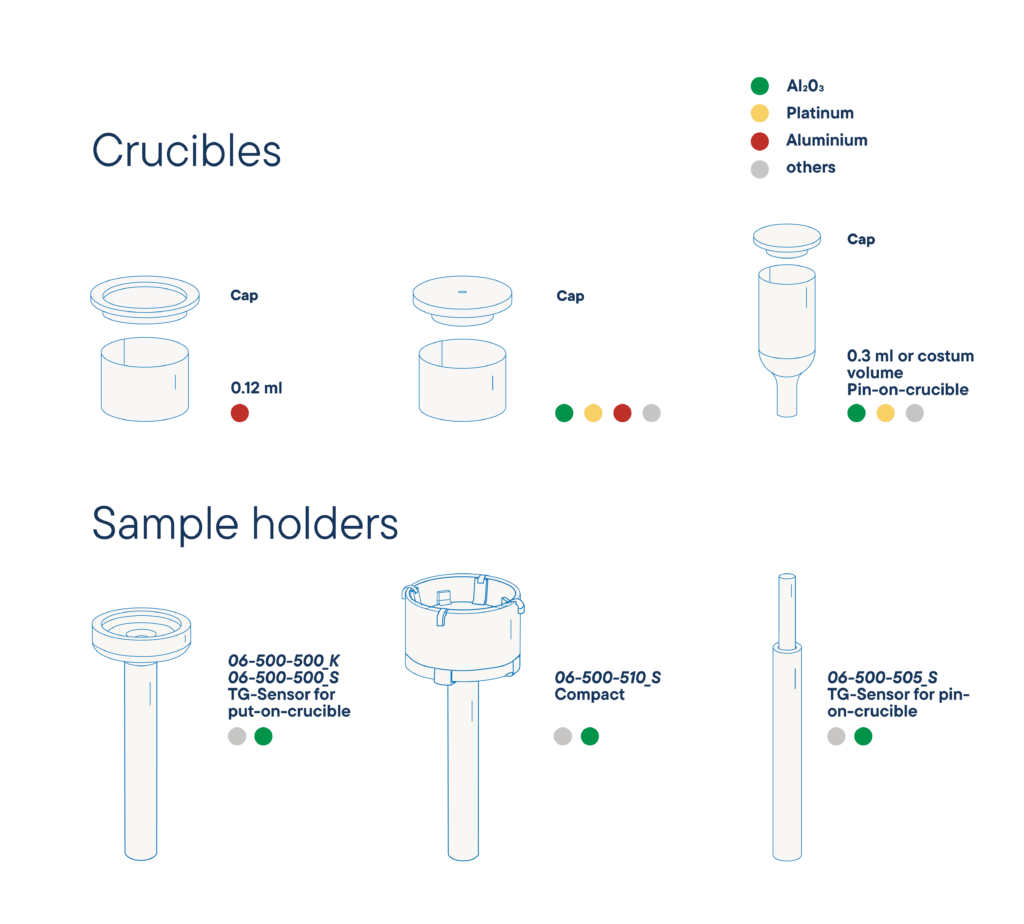
Furnace design
Advantages of LINSEIS TGA L83
- Precise temperature control
- Fast heating/cooling rates
- Atmosphere control
- High sensitivity
- Automation options
- Expanded analysis
Features of the TGA L83 Furnace
- Innovative top-loading system
- Enhanced heating and cooling performance
- Precise thermal management
- Adaptable sample handling
- Rapid cooling capability
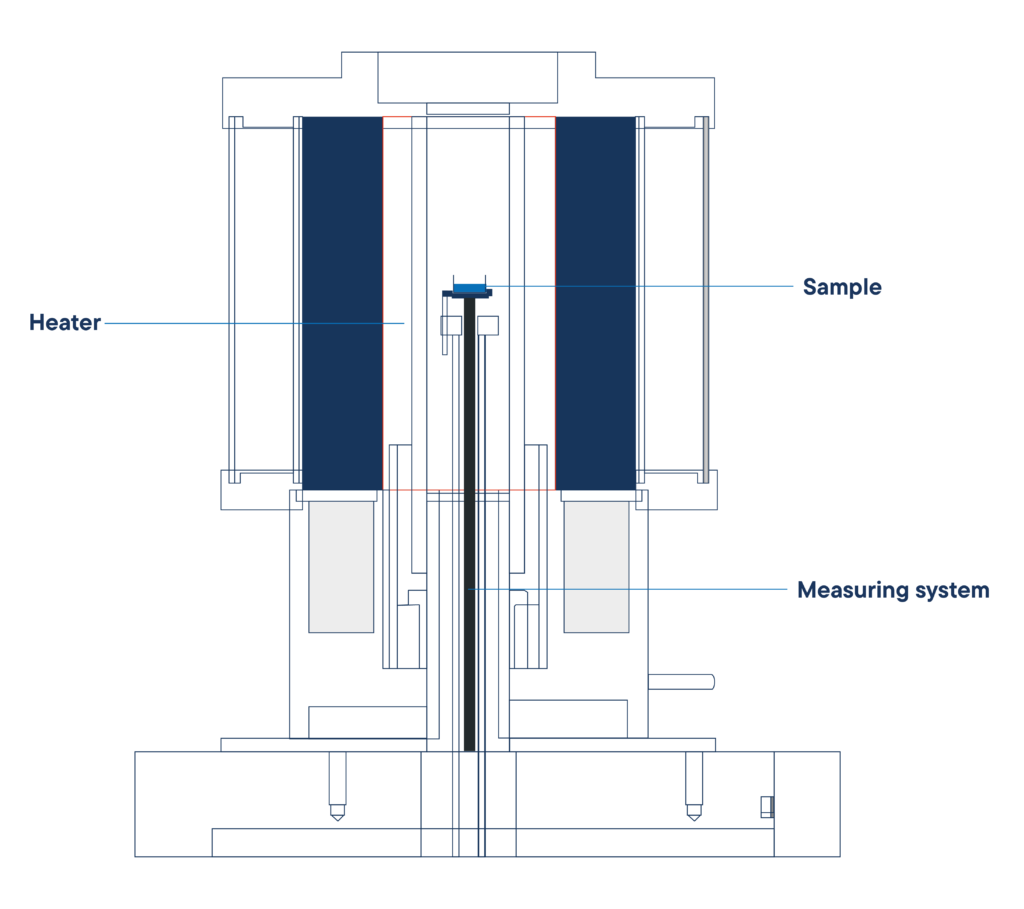
Software
Making values visible and comparable
The powerful LINSEIS thermal analysis software, which is based on Microsoft® Windows®, performs the most important function in the preparation, execution and evaluation of thermoanalytical experiments, in addition to the hardware used.
With this software package, Linseis offers a comprehensive solution for programming all device-specific settings and control functions, as well as for data storage and evaluation.
The package was developed by our in-house software specialists and application experts and has been tried and tested over many years.
TG-Features:
- Mass Change as % and mg
- Rate Controlled Mass Loss
- Evaluation of Mass Loss
- Residue Mass Evaluation
- Program capable of text editing
- Data security in case of power failure
- Thermocouple break protection
- Repetition measurements with minimum parameter input
- Evaluation of current measurement
- Curve comparison up to 32 curves
- Storage and export of evaluations
- Export and import of data ASCII
- Data export to MS Excel
- Multi-methods analysis (DSC TG, TMA, DIL, etc.)
- Zoom function
1 and 2 derivation - Programmable gas control
- Statistical evaluation package
- Free scaling
- Automatic calibration
- Optional Kinetic and Lifetime Prediction Software packages
Applications
Application example: Gypsum plaster decomposition
The measurement example below shows a damage analysis of a gypsum plaster that showed cracks and structural damage after a summer – winter cycle. The manufacturer assumed that the application was not performed properly and used thermogravimetric analysis (TGA) to compare the damaged wall part with a reference gypsum sample that did not show cracks after heating and cooling cycles. The measurement shows that the carbon and organic content of the “bad” samples (green and blue curves) is almost identical with the reference samples (red and black curve).
The weight loss percentage shows the same level around 2 % mass loss in the range around 500 °C. However, there is a significant difference in the weight loss step around 800 °C – 900°C, where the contained carbonates are released as carbon dioxide: The reference samples show a mass loss of around 30 % caused by released CO2 while the samples from the wall with cracks show only 11 % mass loss and 13 % mass loss here. This indicates that the gypsum at the wall that showed structural failures has a significant lower carbon content than it should have which indicates that indeed the mixing of the gypsum plaster was performed wrong. Interestingly, there is also a difference in carbon content between the wall at the west side (weather facing side) and the east side of the building.
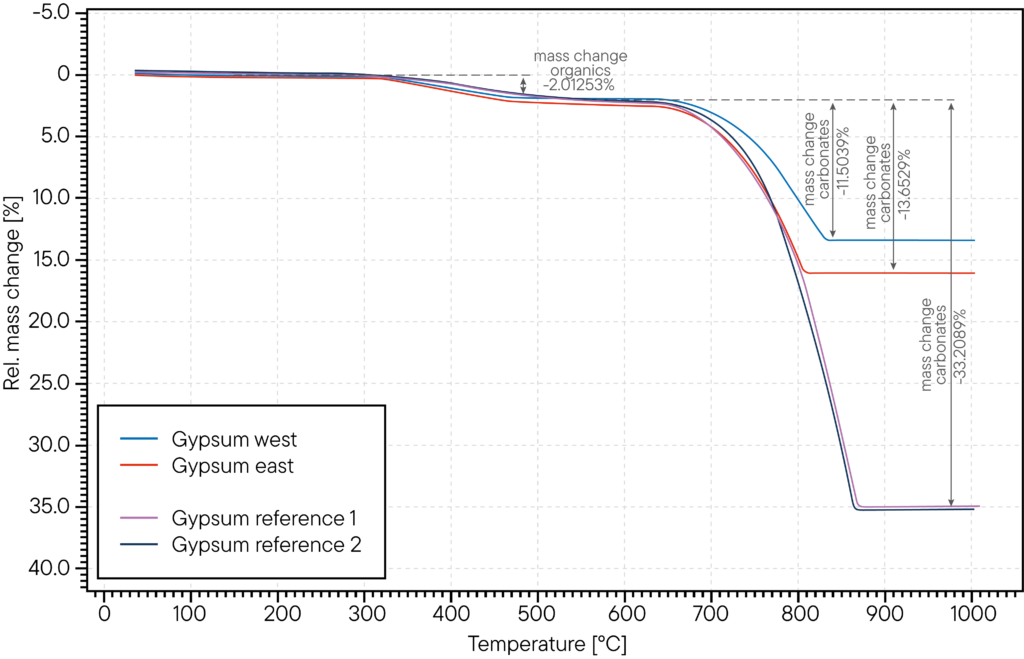

Application example: Decomposition of CaC2O4 • H2O
The curves on the left show a calcium oxalate reference run. On the blue and red curves (relative and absolute Δm), three mass loss steps are visible: the first step corresponds to the release of H₂O, the second to the loss of CO, and the third to the loss of CO₂. The resulting calcium oxide (CaO) subsequently reacts with the water from the first step, which remains in the reaction chamber if the atmosphere is static. This reaction forms calcium hydroxide (Ca(OH)₂) during cooling at around 580 °C.
This final step is difficult to observe with a standard TGA due to typically slow cooling rates. However, in this case, a full measurement cycle was completed 20 minutes. The heating and cooling rates were 2 K/s but can easily be increased to up to 100 K/s using an inductive TGA.
Application example: Cement
The measurement on the left was carried out with a TG-DSC. The main parts of cement are tri-calcium silicate, di-calcium silicate and tri-calcium aluminates.
After mixing the raw cement with water, different hydrates slowly form. When put in a STA, the absorbed water evaporates first during thermal decomposition, then hydrates of the calcium silicate decompose and at 570 °C the hydroxides of calcium, magnesium and aluminum follow.
You can see this effect as mass loss steps (red curve) with parallel endothermic effects on the DSC signal (blue curve). Subsequently, carbon dioxide is released from the carbonates, showing a huge mass loss step at around 800 °C.
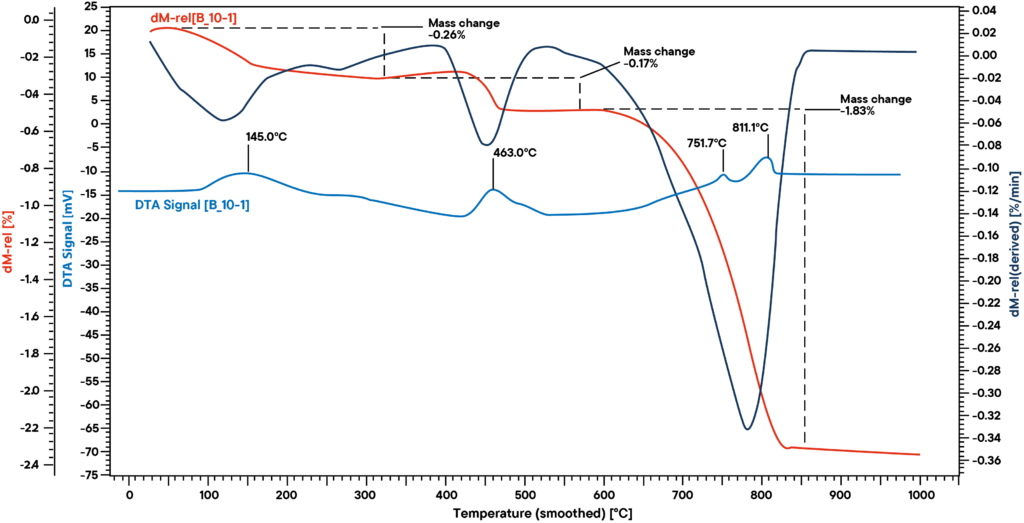

Application example: Decomposition of rubber
The measurement of an industrial rubber sample was conducted using a simultaneous thermal analyzer (STA L82) in a nitrogen atmosphere. The sample was heated in three steps at a rate of 30 K/min each. The blue curve shows the relative weight loss. In the first step, dehydration of the sample occurs, releasing 9.3% water, with no effect observed on the corresponding DTA signal (dark red curve).
In the second reaction step, volatile components (36.0%) are released by pyrolysis under nitrogen, identified by an exothermic peak on the DTA curve. In the third step, the atmosphere changes to oxygen, leading to the combustion of the remaining carbon, resulting in a 14.3% weight loss. The remaining 40.4% consists of inorganic components like ash, lime, or fillers.
Application example: Aspirin
In this application acetylsalycylic acid (Aspirin) was measured by STA L82 with focus on the DSC-signal. By DSC, decomposition reactions can be observed and substances such as pharmaceuticals compounds can be investigated and identified. The measured ASS sample shows the following effects: At the beginning of the heating process, some adsorbed water is released, resulting in a weight loss of about 1 %. At 140°C the melting point of the aspirin is reached, resulting in an endothermic reaction, measured on the DTA trace. At 60°C, decomposition of the molten drug takes place in several stages.
The decomposition products are volatile, resulting in a total weight loss of almost 100 %.

Well informed
